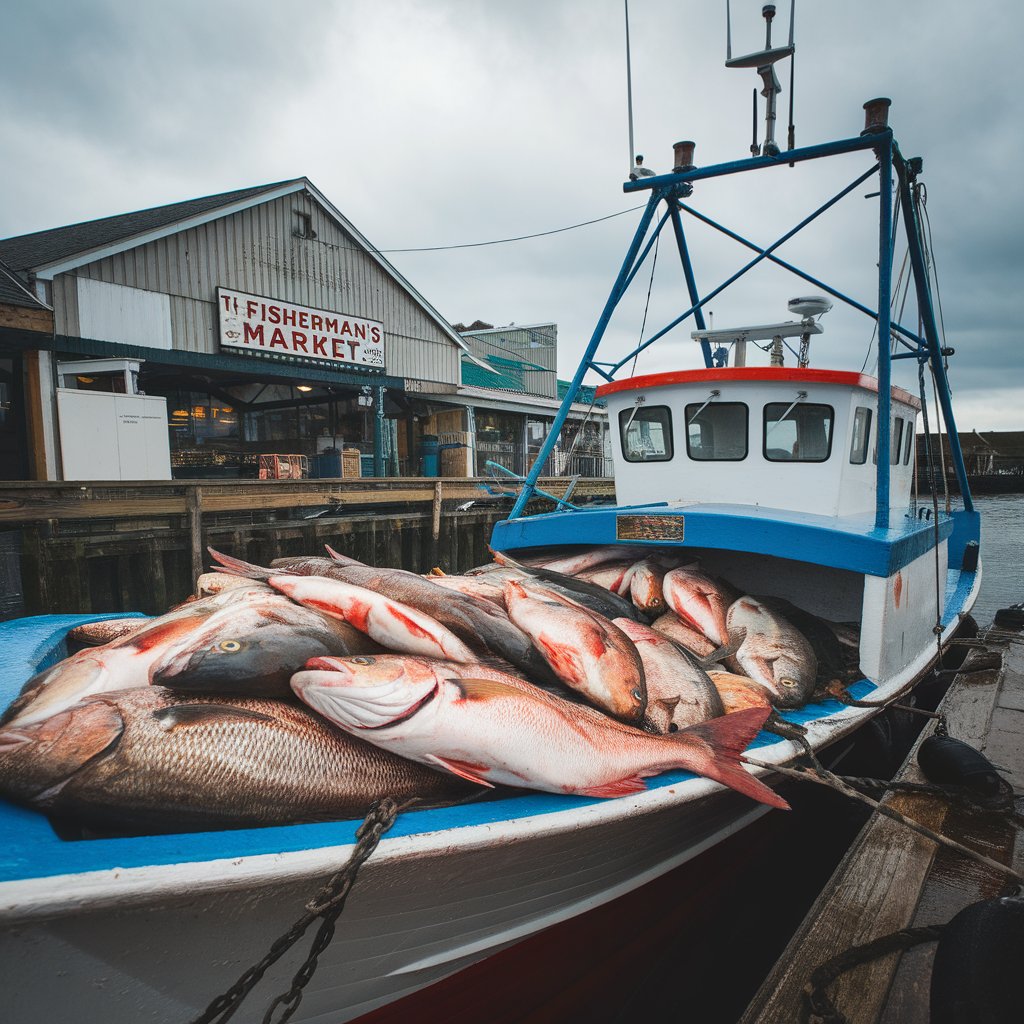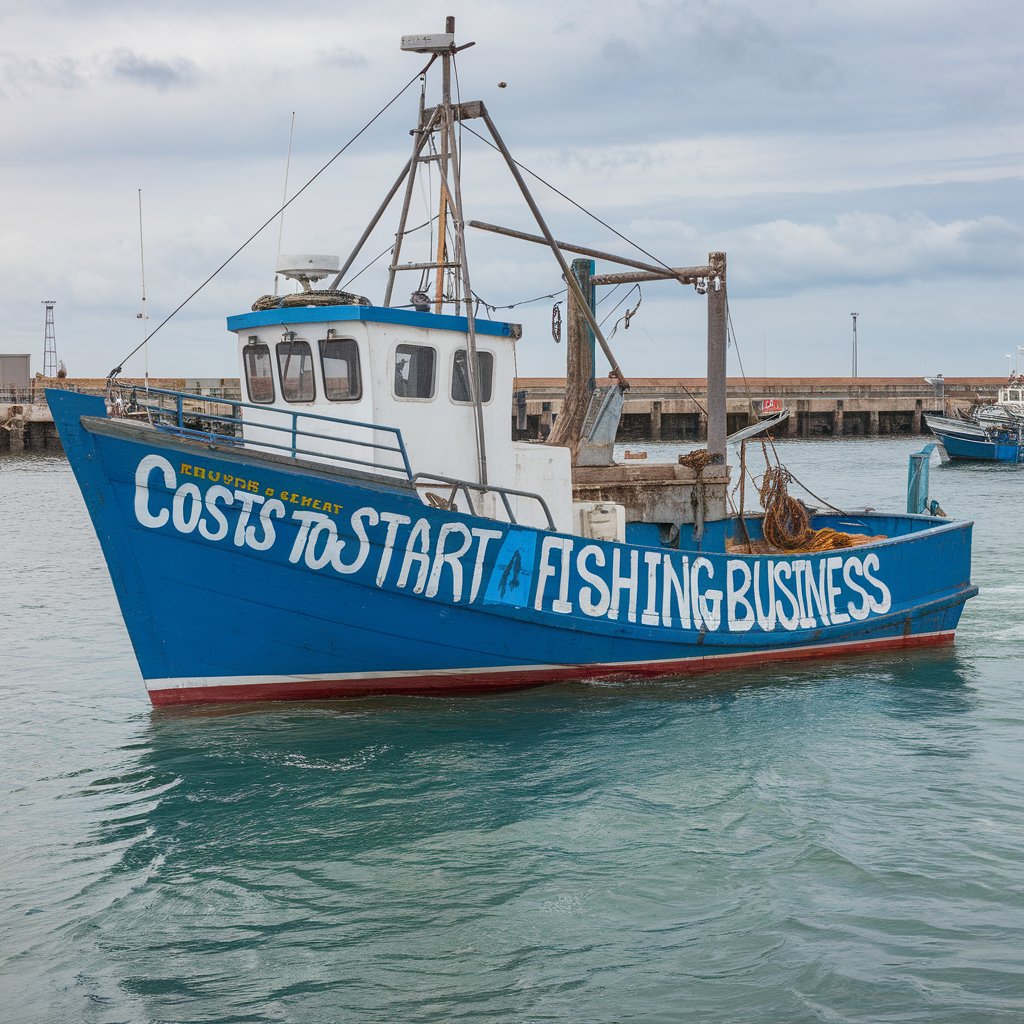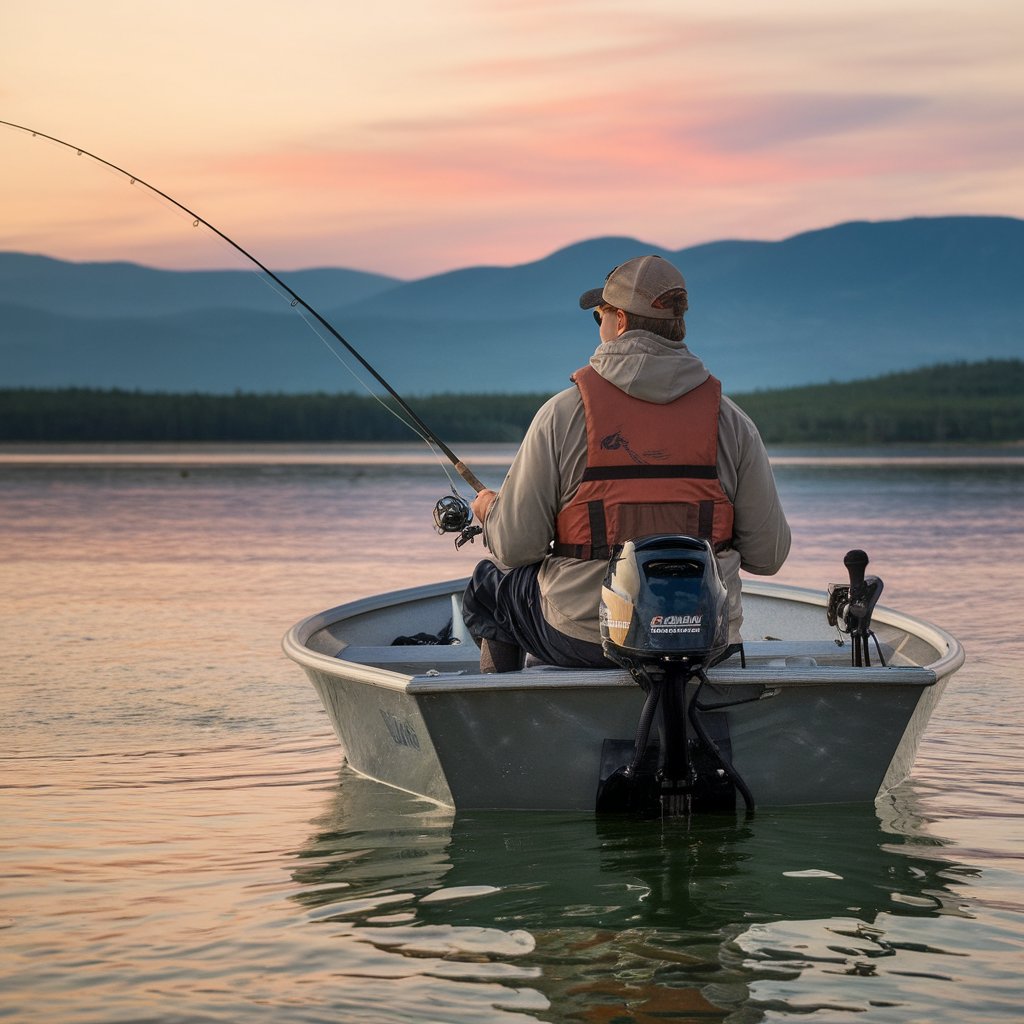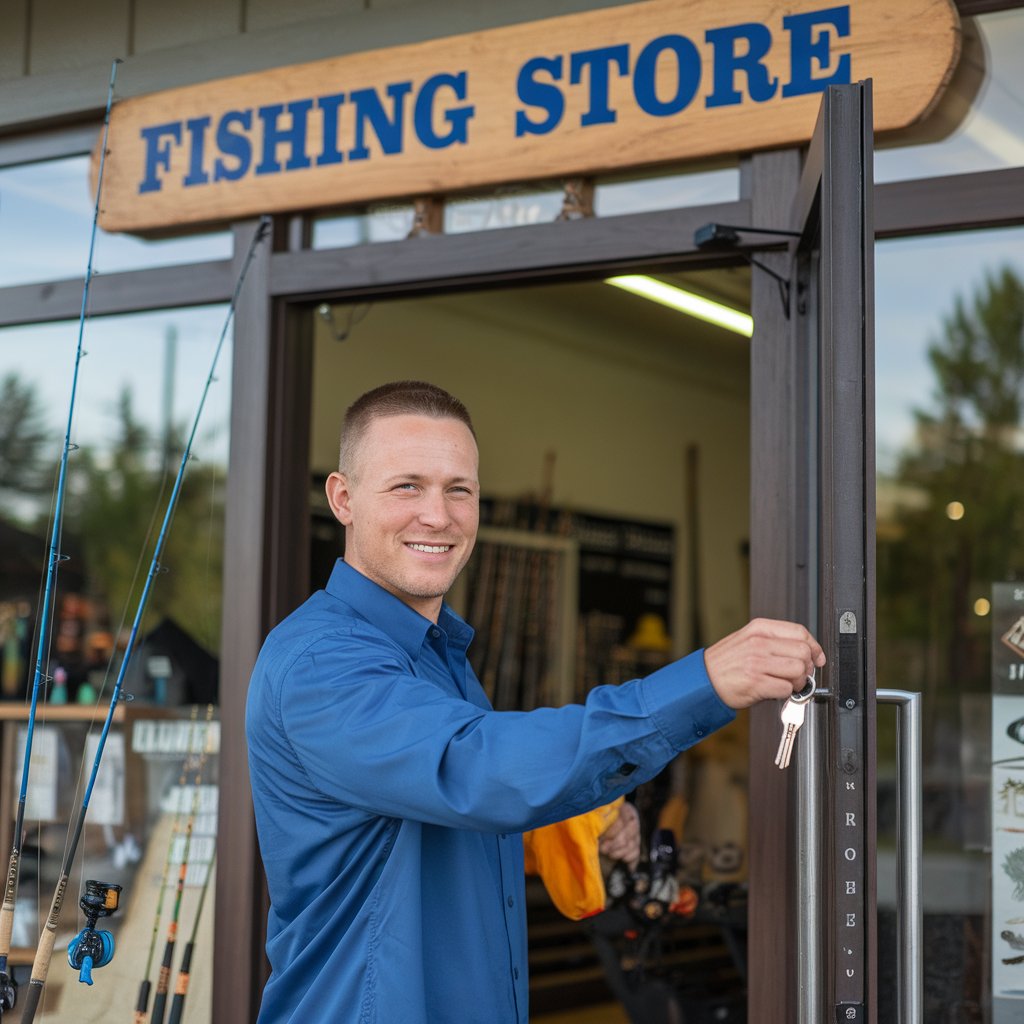Introduction
Have you ever questioned a way to convert your love toward the ocean into a worthwhile project? The global fishing industry exceeds $ 270 billion, and there aren’t any signs and symptoms of its improvement slowing down. Starting a fishing business with sparkling, permanent seafood and increasing demand for brand new strategies, has become one of the most promising possibilities for marketers in 2025.
Fishing is not only about fishing – it is about creating a permanent business model that connects consumers with healthy food sources while protecting marine life. Whether you are interested in opening commercial fishing, fish cultivation, or fishing retail stores, this developed market has space for innovation and profit.
In this full guide, you will learn how to start a fishing business from the ground – including the best business types, startup costs, profitability factors, legal requirements and marketing strategies. By the end, you will have a clear roadmap to launch your own enterprise and dive into one of the world’s most rewarding industries.
Understanding the Fishing Business

1.1 Types of Fishing Businesses
Before you start a fishing business, dive into it, it is important to understand different paths that you can take. The fishing industry offers several professional models, catering for each unique skill, budget and goals.
Commercial is the most traditional fishing model, including catching fish and seafood directly from oceans, lakes or rivers for wholesale or retail sales. It demands experience, equipment and proper licensing – but can get impressive returns when done efficiently.
This is followed by fish cultivation (aquaculture), which is a rapidly growing section inspired by stability and stable demand. Entrepreneurs cultivate fish in controlled environments, ensure year -long production and reduce environmental effects. This is perfect for those who prefer a forecasted supply chain on open water challenges.
Finally, retail fishing stores focus on selling fishing gear, fodder and goods. They also compete with local anglers and tourists, offering personal service and community connections. This model requires low fieldwork but strong customer engagement and marketing.
Each business type has its advantages and challenges, so choosing the right depends on your location, budget and market goals.
1.2 Industry Trends
The modern fishing industry is growing faster than ever – and understanding its trends is important to successfully master the fishing business.
Consumers are more aware today where their seafood comes from. This change has created large -scale interest in sustainable fishing methods and environmentally friendly practices. Businesses that adopt cleaning harvesting techniques or invest in traced seafood sourcing achieve strong customers trust and long -term loyalty.
Technology is another game-changer. From GPS-competent boats to smart aquaculture systems, innovation is making fishing operations more efficient and profitable. Meanwhile, the demand for locally sour seafood is increasing, to compete by offering freshness and authenticity against large corporations to open doors for small -scale businesses.
By aligning your business with these emerging trends — sustainability, technology, and local sourcing — you will not only meet the market demand but also strengthen your enterprise against industry challenges.
Profitability of a Fishing Business

2.1 Revenue Streams
When searching for how to start a fishing business, it is necessary to understand that it is necessary. The fishing industry offers several revenue currents, capable of generating strong returns when each strategically managed.
The most direct source is fish sales – restaurants, distributors or local markets caught fresh or sold seafood. Many successful entrepreneurs expand to increase the price and shelf life by processing their own products, such as frozen or filled fish. Another growing stream is fish cultivation (aquaculture), which allows continuous production regardless of weather and provides stable income with low risks.
You can also earn local anglers and tourists from fishing gear sales, equipment, fodder or boats offering. Some entrepreneurs also launch fishing charter services, providing guided trips that combine entertainment with benefits. By diversity in your income sources, you create a flexible business capable of getting up to ups and downs in market conditions.
2.2 Factors Influencing Profitability
Proficiency in the fishing industry depends on many factors – and it is important to understand them early, before you are committed to starting a completely fishing business.
The location plays a major role; The demand for high seafood or abundant fishing areas usually produce high returns. Market demand also varies depending on regional priorities, consumer trends and popularity of species. To remain competitive, customize your offerings the most for local and global markets.
Next, consider operating costs including fuel, maintenance, crew wages and equipment upgradation. They directly affect your lower line. Smart entrepreneurs cut the cost by adapting the routes, using energy-skilled equipment and interacting at better supply rates. Finally, the seasonal profits affect – some species are available only during specific months, so diversifying your product range helps maintain stable income throughout the year.
By closely monitoring these profitability drivers, you can make smart financial decisions, reduce the risk, and ensure permanent growth in your fishing enterprise.
Costs to Start a Fishing Business

3.1 Initial Investment
Before diving into how to start a fishing business, it is important to understand your startup cost. The initial investment determines how fast you can launch and how competitive your operations will be in the market.
For commercial fishing, your biggest expenses include boat, fishing equipment, network and cooling system. Depending on the scale, small fishing boats can cost anywhere between $ 15,000 to $ 100,000, while industrial trolls reach hundreds of thousands of dollars. You also need fishing permits and licenses, which vary from the field, but which are necessary for legal operation.
If you are planning to start a fish farming (aquaculture) business, the costs will include dam construction, tanks, water filtering systems, feed and finger guys. A small scale setup can start around $ 10,000- $ 25,000, while larger facilities can exceed $ 100,000. In addition, you are included in storage systems, process equipment and safety equipment, all of which ensure a smooth day to day.
Creating a detailed business plan and cost distribution early helps prevent financial surprises and give you a clearer path to profitability.
3.2 Ongoing Expenses
When your fishing business is underway, the ongoing costs play an important role in long -term sustainability. Managing these expenses can effectively make the difference between even profits and financial burden.
Repetitive costs include maintenance of boats and equipment, regular fuel costs and working wages for your crew or farm staff. You must also budget for insurance coverage, which protects against accidents, loss of properties or environmental damage-a must in the fishing industry.
In addition, marketing and distribution costs should not be overlooked. Marketing your products online, joining seafood market places or collaborating with restaurants requires a smooth investment. Don’t forget tools, feed costs and health inspections, especially if you run an aquaculture setup.
By tracking these continuous expenses and using cost control strategies, you can maintain profitability, reinvest in your operation, and gradually scale your fishing business with confidence.
Steps to Start Your Own Fishing Business

4.1 Research and Planning
The first step in getting to know ways to begin a fishing business is research and plan. Without a clear plan, even the best ideas can drown before setting the sail. Start by means of carrying out marketplace studies to understand your target audiences, seafood call for and nearby opposition. Identify which fish are the most famous and beneficial to your area – whether or not it’s miles tilapia, salmon or shellfish.
Next, put together a stable business plan that outlines your objectives, startup fees, expected advantages and working approach. This report will manual your decisions and help in attracting buyers or financial institution loans. Use dependable records, set the stone of obtainable miles, and consist of an advertising and balance plan. Remember, a nicely -structured plan is a compass that continues your fishing business at the route.
4.2 Legal Requirements
When searching for how to start a fishing business, legal compliance is non-parasical. The fishing industry operates under strict rules, licenses and environmental standards that differ from location and commercial types.
You will need a commercial fishing license or aquaculture permit before catching or cultivating fish. Local authorities often require zoning approval to ensure that your operations do not harm the maritime ecosystems. If you plan to sell to consumers or restaurants directly, you may also need a health certificate and food handling permits.
Fishing quota, stay updated on environmental laws and stability policies – breaking them can cause heavy fines or suspension. Consultation with local fisheries departments or legal experts can save you time and ensure that your business is completely obedient.
4.3 Setting Up Operations
Now that you understand the basics about starting a fishing business, it is time to establish your operation. This phase converts your plan into reality and gives the foundation of smooth daily management.
Start by buying or leasing the right equipment including boats, nets, cold storage and safety gear. If you are starting a fish farm, invest in tanks, aeration system and water test kits to maintain healthy stock. Choose your location strategically – strong seafood -demanded coastal areas or areas often have better results.
The creation of a partnership with local suppliers, fish markets and distributors can give your business a competitive edge. You can also detect government grants or aquaculture aid programs that help new fishing entrepreneurs to reduce startup costs. Once your setup is ready, focus on creating efficient workflows that balance productivity, stability and profit.
Opening a Fishing Store

5.1 Cost Analysis for Opening a Store
If you’re determined to start a fishing enterprise, but choose land-based operations, starting a fishing retail store may be a smart, beneficial alternative. This allows you to serve each expert fisherman and casual pastimes while constructing a strong local consumer base.
The cost of the startup for the fishing store largely relies upon the region, stock length and branding. Renting a store in a busy coastal town or a popular fishing place can vary from $ 1,000 to $ 5,000 in line with month depending on your region. Your preliminary stock investment – inclusive of fishing rods, fodder, address, net and out of doors tools – can begin about $ 10,000 to $ 20,000 for a small save.
Do not forget about the shop setup value, signage, factor-cellular system and display gadget, that may upload any other thousand dollars. Renting knowledgeable employees with fishing experience can sell clients’ pride and sales. With accurate pricing and customer support, your keep can quickly grow to be a destination for neighborhood anglers and tourists.
5.2 Marketing Strategies
Once your store is ready, the subsequent step to master the fishing business is to discover ways to appeal to and maintain clients. The right marketing strategy will assist you stand within the competitive marketplace.
Start with the aid of setting up a robust on-line look – create a website, customize it for local search engine marketing, and listing your commercial enterprise at the Google Map. Use social media systems like Facebook, Instagram and YouTube to proportion fishing hints, product reviews and events. Cooperation with nearby fishing golf equipment or influential people also can increase emblem recognition and trust.
Host small activities together with fishing tournaments or free workshops for beginners. Present seasonal reductions and loyalty applications to encourage clients traveling repeatedly. Connecting online visibility with real -world relationships allows your commercial enterprise to grow faster and becomes a faithful fishing network around your brand.
Conclusion
If you plan it with strategy and passion, your own fishing enterprise can be beneficial and fulfilled. During this guide, you have learned every necessary steps to start a fishing business – from understanding a variety of fishing models to analyzing costs, obtaining licenses and establishing efficient operations.
The fishing industry continues to develop with permanent practices, modern technology and fresh, increasing consumer demand for locally citrus seafood. Whether you pick out to run industrial fishing, fish cultivation, or fishing retail shops, fulfillment depends on coaching, stability and flexibility.
Be committed to learning, embracing innovation and having a strong courting within your community. As long as you integrate understanding with willpower, your fishing business can thrive in any marketplace and make a meaningful contribution to each economic system and surroundings.
Now whilst you recognize a way to start a fishing commercial enterprise, it is time to take step one – make a clever plan, be long lasting, and set the sail towards success.
How to create a fishing company?
To create a fishing company, start by defining your business model - whether it is commercial fishing, fish cultivation, or a retail fishing shop. Subsequently, conduct market research to identify local demand and profitable fish species. Prepare a detailed business plan underlining your goals, budget and operation. Secure the necessary licenses, permits and insurance before purchasing equipment such as boats or tanks. Finally, focus on marketing and distribution - construction of partnership with local buyers, restaurants and online seafood platforms will help your business grow faster.
What is the biggest problem in the fishing industry?
The biggest challenge in today's fishing industry is overfing and stability. Excessive harvesting of fish stocks threatens the maritime ecosystem and reduces long -term profitability. Other major issues include climate change, increasing fuel and equipment cost and complex regulatory compliance. To overcome these problems, modern entrepreneurs focus on permanent fishing practices, invest in aquaculture technology, and adopt environmentally friendly harvesting methods that protect the environment while maintaining business growth
Is fish a good business?
Yes, fish is one of the most profitable and durable businesses when managed correctly. The global seafood market continues to expand due to the increasing demand for healthy, protein -rich diets. Starting a fish cultivation or fishing enterprise can provide stable returns with relatively low operating costs, especially when using modern, skilled systems. The key to success lies in proper plan, location selection and quality control. By aligning with durable practices and consumer preferences, fish can be a long-term, high-ancked business opportunity.
How do you start fishing?
If you are learning fishing then start with basic things. Get the correct gear of fishing - such as sticks, reel, fodder and hooks - and choose accessible places like lake, pond or ghat. Learn about local fishing rules, as permits are required in many areas. Practice casting techniques, understand the behavior of fish and gain experience as well as upgrade your equipment slowly. If you are starting a fishing business, increase your operation by investing in boats, nets and proper storage, and always follow the permanent methods of fishing for long -term success.